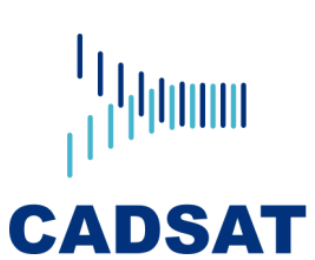PAGE CONTENTS
Objectives
The main objectives of this project was to investigate the applicability and enumerate the potential gains of using Carrier Aggregation (CA) in satellite systems with taking into considerations the various nuances therein:
-
Define relevant scenarios for the possible implementation of CA schemes. The candidate scenarios can be characterized based on services, operational frequency bands, nature of CA (beam level, transponder level etc.).
-
Assess the impact of CA schemes on the design and operation of gateway, payload and user terminal. The axes for impact analyses include hardware and processing complexity, modifications to existing standards, and end-to-end system performance analysis.
-
Demonstrate and examine the performance of CA under different scenarios highlighting the implementation consequences on RF, PHY, MAC and link layers, where an end-to-end laboratory software-based testbed called “Carrier Aggregation Demonstrator (CADSAT)” is developed for this evaluation.
-
Based on the designing insights and the outcomes of the demonstration and testing, this project defines the technological roadmap to fill the gaps between the existing technologies and those of future that are needed for CA implementation.
The CADSAT project was extended with a CCN where an in-Lab demo was developed and tested.


Challenges
Carrier Aggregation (CA) can be seen as an extension or improved-version of Channel Bonding (CB), which is included in the DVB-S2X standard. CA considers Adaptive Coding and Modulation (ACM), and can be applied to intra-band contiguous, intra-band non-contiguous and inter-band carriers, allowing an arbitrary number of aggregated carriers.
The success of the deployment of CA in satellite communications systems entail the development of three key components:
| Packet scheduler and Load Balancing at GW side | Implement the user-carrier association and schedule the PDUs across the carriers based on the link capacities and congestion, so that at the receiver side the packet disordering is minimized. |
| Packet merging unit (FIFO-based) at the UT side | Convert the multiple streams of the aggregated carriers into a single stream of received packets. |
| Multiuser Aggregation and Access Control | Designing the carrier allocation strategy for all the user terminals of the system and determining the multiplexing of each carrier. |
| UT chip able to simultaneously lock-in to multiple carriers | This component already exists in the market. |
System Architecture
Carrier Aggregation (CA) is implemented by means of three main blocks. First, at the Gateway side, a Multiuser Aggregation and Access Control (MAAC) block represents the main intelligence of the system that is in charge of designing the carrier allocation strategy for all the user terminals in the system as well as the multiplexing of each carrier. Also in the gateway side, a key module is the load balancing and PDU scheduler, that is responsible for applying the decisions of the MAAC by distributing the incoming PDUs across the available carriers. The load balancing and PDU scheduler block has to be carefully designed such that the PDUs are distributed across the selected carriers based on the link capacities so that the PDU disordering is minimized at the receiver side.
Finally, at the receiver side, the most important block is the traffic-merging block that takes the PDU streams of the aggregated carriers as input and converts them into a single stream of received PDUs.
Plan
CADSAT started in January 2018 and concluded in June 2023 (including the CCN).
The project was composed of four main tasks:
-
Carrier aggregation scenario definition and selection.
-
CADSAT design and implementation
-
CADSAT testing
-
CADSAT development roadmap.
-
In-Lab CADSAT Demo.
Current Status
Completed.
Related Links
Companies


